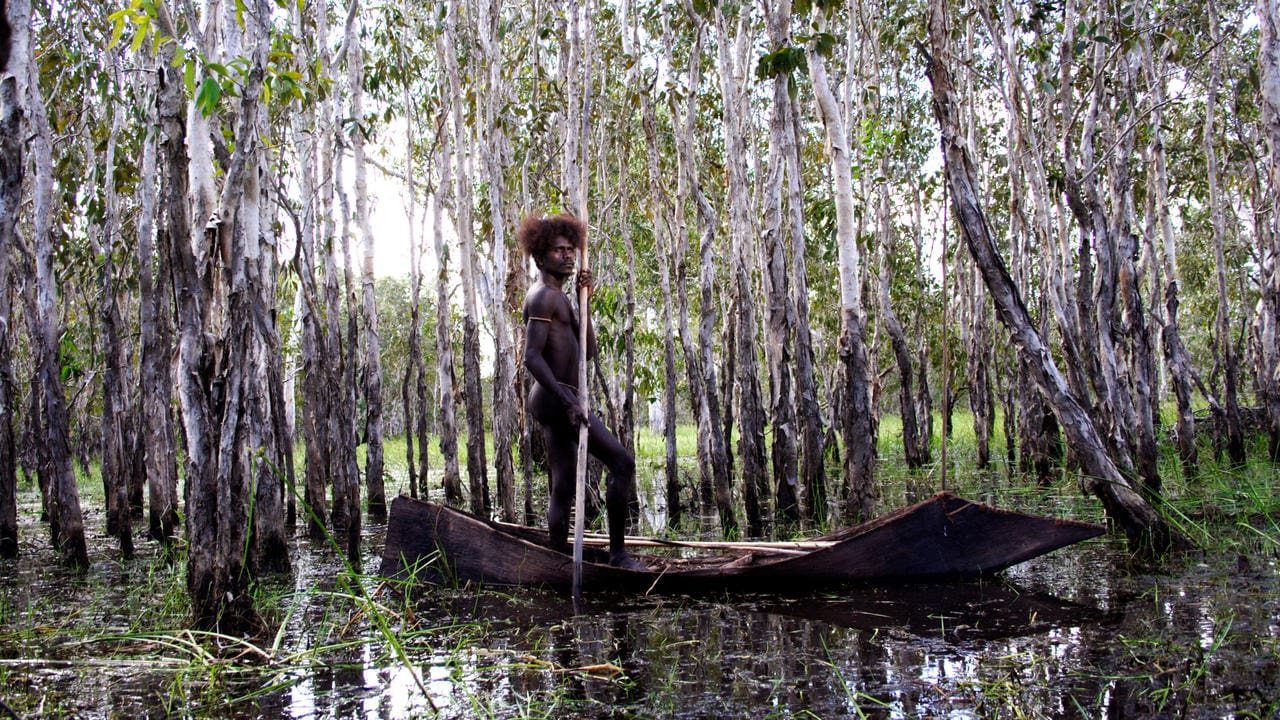

As an anthropologist, I'm often faced with the task of trying to get my students to look at life through the eyes of someone from a different culture. Alas, many of the ethnographic films used are often presented in the format of "look at the friendly natives." There are exceptions, to be sure but over the years in the face of the absence of good ethnographic films, I've come to rely on good commercial films with a solid ethnographic content. Now, being a film buff as well as a social scientist, I've seen a lot of films. And, to be sure, there are some stinkers, e.g., overly romanticized or historically distorted portrayals of people in some cases, and sacrificed ethnographic facts in the spirit of "making a good story," in others. But, every once in a while a real gem comes along. Ten Canoes is such a film. The presentation and setting is authentic and the actors are all aboriginal Australians. The greatly talented David Gulpilil is joined by his son, Jamie and a crew of very talented and energetic Native Australians. The tale, based on Australian cultural lore is simple yet profound in the telling. The acting is subtle and devoid of Western theatrics. As a commercial film with a solid depiction of something from the multiplex cultures of Native Australian Aborigines, it is delightful to watch and fascinating to observe these people in the act of being themselves.
... View MoreI know I'm going to be labelled as a Philistine for these comments, but I was rather underwhelmed by the whole experience. Not that I'm not interested in this genre of movie--indeed I am, whether it be about Australian aborigines, Celts, American Indians or Canucks. But this particular presentation left me wondering why I'd spent an hour-and-a-half watching it. The story or message could have been summarised in about three or four lines; the characters should have been rounded out more; the cinematography was little more than adequate and the narration by David Gulpilil--a long-time favourite of mine--lacked impact. It came over like an aboriginal version of The Gods Must Be Crazy--sans humour! I suspect the film received its positive reviews because of its subject matter and that critics praised it because it is filmed in Ganalbingu. Why is it that I get a sense of seeing an unclothed emperor?
... View MoreThe trailer does in no manner show what this movie is like. In fact The entire movie is quite well summarized in it. The story moves _extremly_ slow and does best mostly for a nap. If you would like to get the impression of the life in the bush, go ahead and watch it. I know for sure that I would rather have seen something else! Looking at the grades I feel like what I felt after seeing Serenity - the votes must come from only the dedicated fans... There is simply not more to write so the rest ends up as a free roll - sorry for that and I know it is against the guide lines. I just feel that... well.. It is not good and the only way that I can spread the word is by saying something and not only be some "stupid smock" giving it two when the statistics shows that it is okay. It simply is not okay.
... View MoreTen Canoes provides a surprisingly humorous yet in depth look into the aborigines of Australia. The film captures the beauty of Australia's Northern Territory as it opens upon the green landscape. Unlike anything we have ever seen about Australia before, Canoes brings us back 1,000 years ago before the balanda(white man) came. We would have never been able to see or experience a culture like this if it wasn't for this film. Director Rolf de Heer was inspired by Dr. Donald Thomson who first captured the aboriginal group with an extensive group of photographs, especially one photo of ten men in bark canoes, hence the title. The movie sends you to a land far away from that of Hollywood and transplants you into an enchanting hypnotic land. The "making of" bonus features allow us to see how difficult it was to make, but also how authentic it is.
... View More